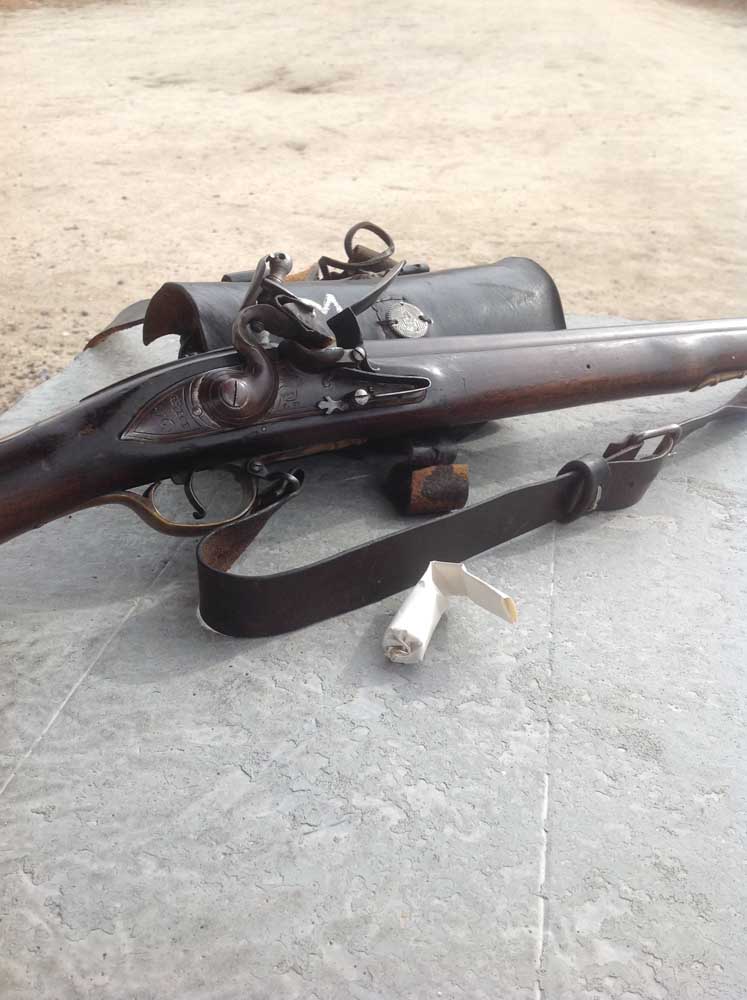Brown Bess — the gun that charmed America
Published 12:00 am Wednesday, March 25, 2015

- Gary Lewis / For The BulletinA replica Brown Bess musket and a paper load that contains powder and a lead ball. This gun has seen action in Revolutionary War re-enactments and on whitetail hunts in Michigan.
“You might have guessed from my accent I’m not from around here.”
I had guessed no such thing.
Trending
I wasn’t from around there either. In Emmett, Idaho, last week, my wife, my father-in-law and I went to the Gem County Rod and Gun Club to shoot bolt-action rifles and semi-auto pistols.
We chanced to talk to one of the club officers, a Greg Kershul, and he had brought a couple of interesting items out for exercise on a Saturday morning.
Guns, like people, tend to stay in the areas of the country in which they came of age. For instance, out here in the West, we are familiar with blackpowder mountain rifles and lever-actions such as the Winchester 73 and the Model 94. We were also early adopters of the Winchester Model 70 and the Remington 700.
In the Rocky Mountains and south, and east into the plains, there is a tendency for gun collections to run to single-shot buffalo guns and old U.S. Army breechloaders.
The Eastern seaboard was settled by flintlock rifles of the vintage used in the Revolutionary War. A lot of Civil War guns are in collections in places the victors returned to. But guns travel, too.
“I’m from Michigan, and back there we have a lot of the rifles that were used in the Revolutionary War and in the Civil War,” Kershul said.
Trending
He hadn’t brought original guns to the range, but replicas, well-used, in the conditions they might have been in after three or four years of hard campaigning.
Kershul handed me a Brown Bess Musket by Pedersoli.
The British Army’s Land Pattern Musket, nicknamed Brown Bess by the men who held her tight, was used by the British in the Revolutionary War in the 1770s and in the War of 1812. It also saw action in the Mexican-American War. A smooth-bore, 75-caliber, it is fired by flint and steel, tips the scales at 8¾ pounds and measures almost 5 feet long.
The Brown Bess was both admired and scorned by a young America. She was reliable and packed a fearsome punch, but she was not accurate. Americans wanted rifles that were accurate and could be put to use from long range.
The British tended to fight battles in rank and file, their troops ordered and brave, standing to fire and load, fire and load, in the face of hostile muzzles on the other side. And they used the Brown Bess.
Americans used the Brown Bess, too, but they put it aside when they could get a gun with a rifled barrel that fired a stabilized projectile with greater accuracy at long range. And the Americans won the war, and the flintlock rifle began to march across the continent.
A lot of those Brown Bess muskets ended up in the hands of Native Americans, too. Though it isn’t venerated like the Kentucky or Tennessee long rifle, or the Hawken of a later age, the Brown Bess is an American artifact.
Kershul carried his loads in a pouch, each individually wrapped in paper.
He primed the gun by tearing away a bit of the paper wrap and sprinkling powder into the pan, then he poured the rest of the charge down the barrel, followed by the bullet, which, of course, was seated with the ramrod.
He handed me the musket.
Two hundred yards downrange stood a man-sized target.
Back in the 1700s, the average Britisher stood about 5-foot-6 and would have carried a musket, too. I found the front sight (the Brown Bess didn’t have a rear sight), held head-high for bullet drop and squeezed.
The flint snapped into steel, the sparks ignited the powder in the pan. The gun belched smoke and fire, and a puff of dirt signaled the ball’s strike. I like to think the lead ball tugged at the sleeve of the imaginary soldier on the other side.
This particular musket, Kershul said, had accounted for 37 deer back home and had participated in numerous re enactments. He has also carried it for elk hunts in the West.
It was easy to picture the Brown Bess packed in a wagon headed into Oregon Territory in the 1840s. Its owner entrusted his life to it and sometimes held it tight on lonely nights.
Brown Bess wasn’t from around here, but she certainly made her presence known. It can happen anytime we go to the range. There could be a slice of history, a glimpse into the past we get when we pick up an old gun and let it speak again.
Rudyard Kipling wrote, “In the days of lace-ruffles, perukes and brocade, Brown Bess was a partner whom none could despise / An out-spoken, flinty-lipped, brazen-faced jade, / With a habit of looking men straight in the eyes / At Blenhieim and Ramilies, fops would confess / They were pierced to the heart by the charms of Brown Bess.”
— Gary Lewis is the host of “Frontier Unlimited” TV and author of “John Nosler — Going Ballistic,” “A Bear Hunter’s Guide to the Universe,” “Hunting Oregon” and other titles. Contact Gary at www.GaryLewisOutdoors.com.








